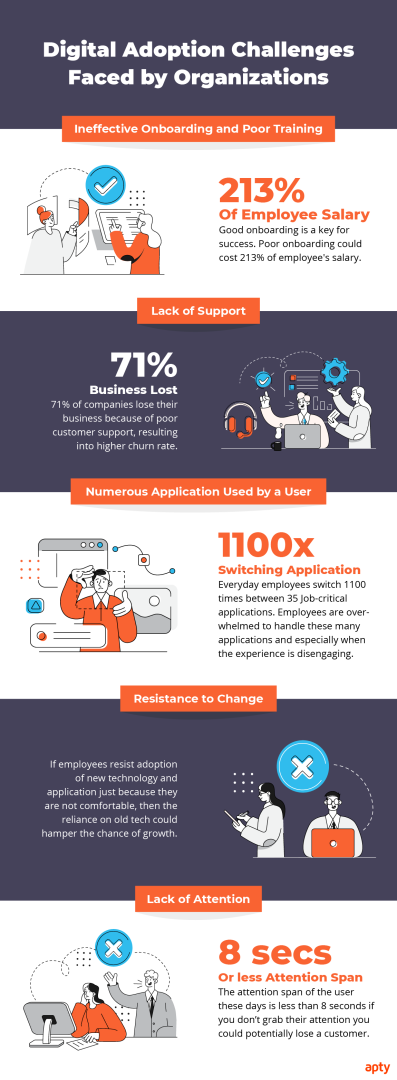TECHNOLOGY
Strategies for Overcoming Digital Adoption Challenges

With the right approach, companies can successfully navigate the complexities and reap the benefits of digitalization.
The advent of digital technology has revolutionized the way we live and work. From smartphones to social media, digital tools have become ubiquitous in our daily lives. For many individuals and organizations, adopting digital technology can be a significant challenge. There are various factors that contribute to these challenges, such as lack of digital literacy, outdated infrastructure, and resistance to change. In this article, we will explore some of the most significant challenges of digital adoption and strategies for overcoming them.
What Are The Challenges of Digital Adoption?
To capitalise on the potential of both new and existing technologies, digital transformation efforts must constantly evolve.

Here are the most common challenges of digital adoption:
Lack of Digital Literacy
Many people lack the skills and knowledge required to effectively use digital technology. This can be especially true for older individuals or those from underprivileged backgrounds who have had limited access to digital tools.
Outdated Infrastructure
Some organizations may have outdated hardware or software that is incompatible with newer digital technologies. This can make it challenging to implement new digital tools or upgrade existing systems.
Resistance to Change
Some individuals or organizations may be resistant to change, preferring to stick with familiar methods rather than adopt new ones.
Security and Privacy Concerns
With the increasing prevalence of cyber threats, some individuals or organizations may be hesitant to adopt new digital technologies due to concerns about data security and privacy.
4 Strategies for Overcoming Digital Adoption Challenges
Many businesses dive headfirst into digital transformation without adequate planning.

Here are 4 stategies for overcoming digital adoption challenges:
Provide Digital Literacy Training
Providing training and resources to individuals and organizations can help them become more comfortable with digital technology. This can include online tutorials, workshops, and one-on-one coaching sessions.
Upgrade Infrastructure
Upgrading outdated hardware and software can help ensure compatibility with newer digital tools and improve overall system performance.
Communicate the Benefits of Digital Adoption
Communicating the benefits of digital technology, such as increased efficiency and productivity, can help overcome resistance to change.
Address Security and Privacy Concerns
Implementing robust security measures and communicating them clearly can help address concerns about data security and privacy.
Digital Transformation Takes Time
Digital technology offers many benefits to individuals and organizations, but adopting new digital tools can be challenging.

Overcoming digital transformation challenges requires a combination of training, infrastructure upgrades, effective communication, and addressing concerns around security and privacy. By taking these steps, individuals and organizations can successfully adopt digital technology and realize the benefits that it offers.

















